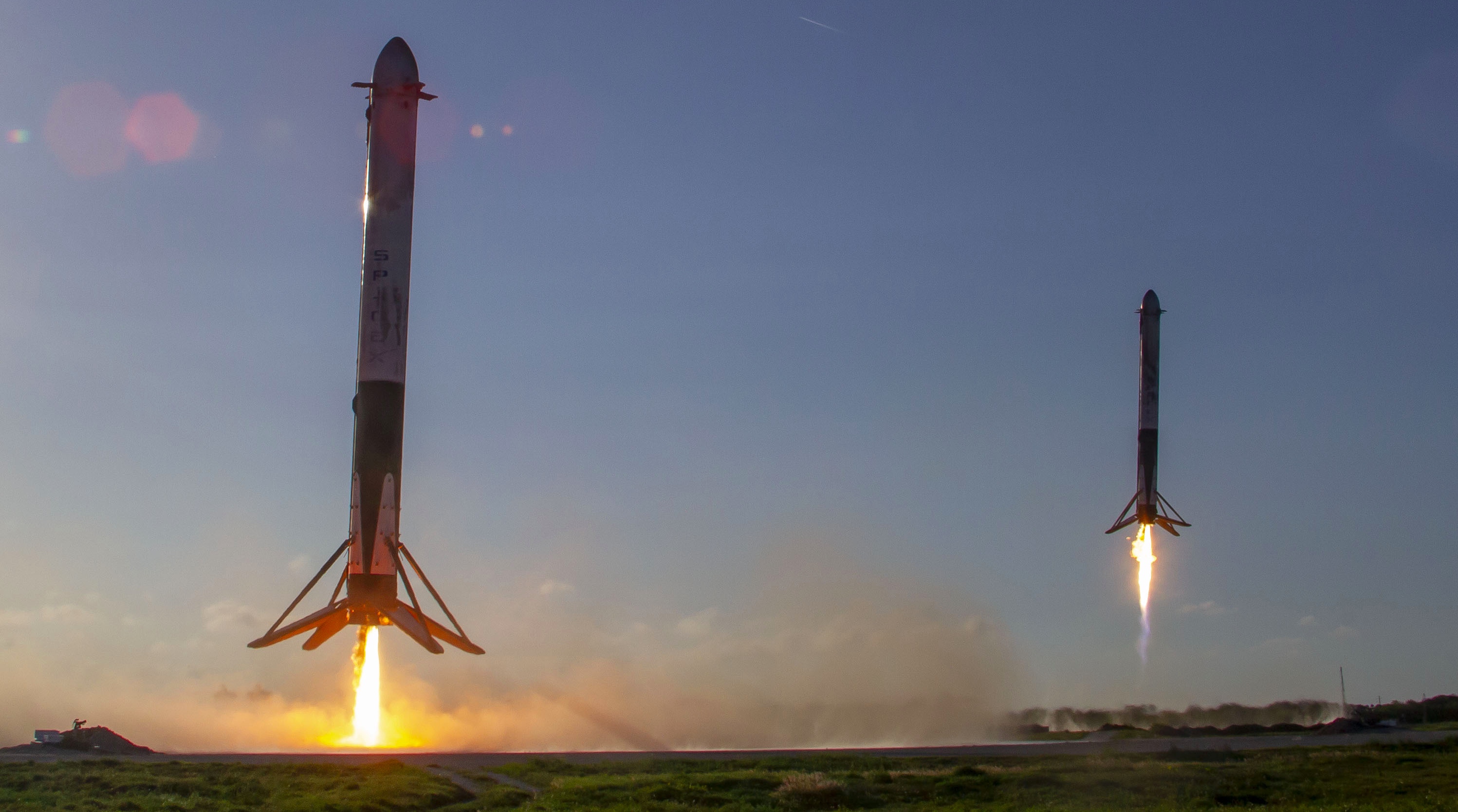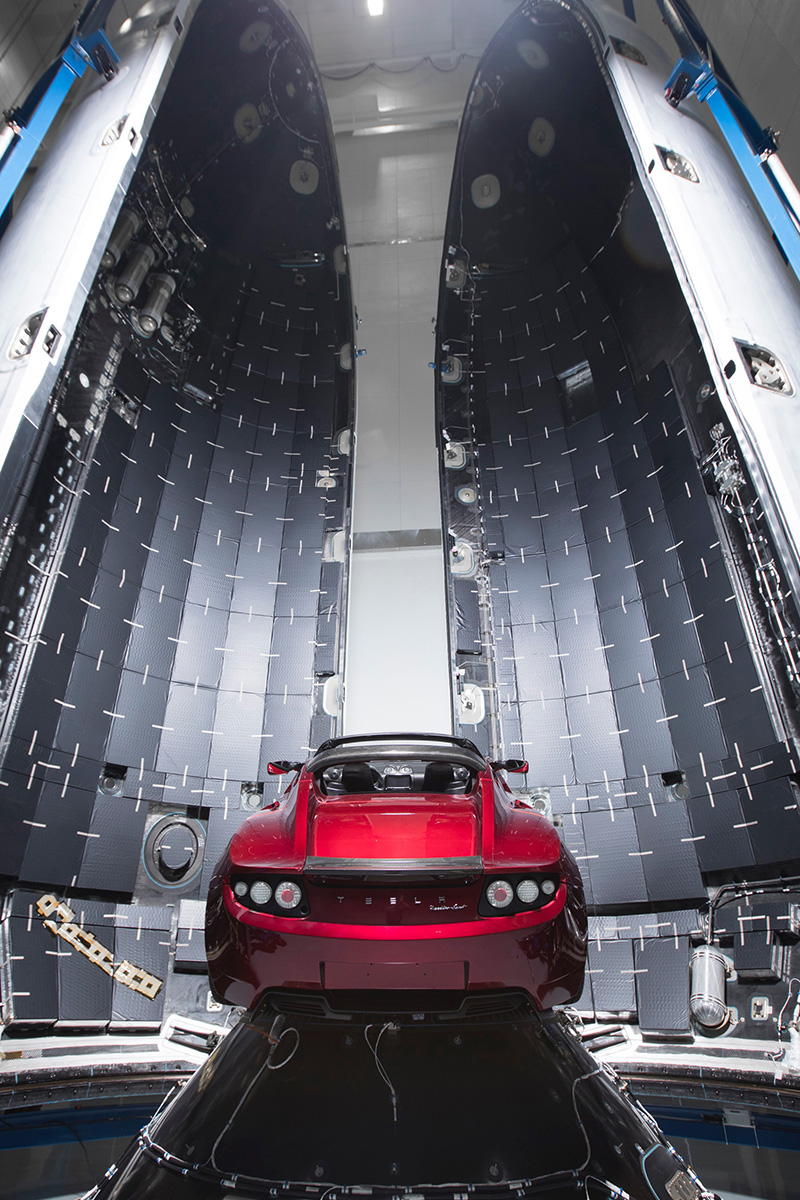SpaceX's Falcon Heavy Rocket: By the Numbers
The world's most powerful rocket is now fully operational.
On April 11, 2019, SpaceX's huge Falcon Heavy rocket aced its first commercial mission, sending the 13,200-lb. (6,000 kilograms) Arabsat-6A communications satellite into orbit.
And the reusable Heavy's three first-stage boosters aced their landings that day as well. Two came down at SpaceX's "Landing Zone 1" at Cape Canaveral Air Force Station in Florida, and the third settled softly onto the deck of a robotic ship in the Atlantic Ocean. (Rough seas caused this latter booster, the Heavy's central core, to topple over on the way back to shore, however.)
Related: Falcon Heavy's 1st Commercial Mission in Photos
Arabsat-6A was Falcon Heavy's second flight overall. The rocket first flew in February 2018, on a demonstration mission that launched SpaceX chief Elon Musk's red Tesla Roadster into orbit around the sun.
Both flights originated from Launch Pad 39A, the historic site where NASA's Apollo moon missions and space shuttles lifted off.

SpaceX also recovered both halves of the $6 million payload fairing — the shell that protects satellites during launch — shortly after the Heavy lifted off on April 11. The company plans to reuse the fairing and the two intact first-stage boosters, Musk has said.
Get the Space.com Newsletter
Breaking space news, the latest updates on rocket launches, skywatching events and more!
SpaceX has already landed and reflown the first stages of its workhorse Falcon 9 rockets multiple times. Such reuse is part of the company's plan to slash the cost of spaceflight, thereby making ambitious exploration feats economically feasible.

To gain a fuller understanding of the Falcon Heavy, we must look at the numbers:
5 million: The lbs. of thrust that Falcon Heavy generates at liftoff. Falcon Heavy is the most powerful rocket to launch since NASA's Saturn V — the iconic vehicle that, with 7.5 million lbs. of thrust, accomplished the definitive Apollo-era feat of putting astronauts on the moon. The Falcon Heavy is "twice as powerful as any other booster operating today," Musk has said.
230: The height, in feet, of the Falcon Heavy rocket. This translates to about 70 meters tall.
140,700 - The payload size capability of the Falcon Heavy rocket in lbs. (equivalent to 63,800 kilograms). This is more than twice what its main, currently operational competitor, United Launch Alliance's Delta IV Heavy Booster, can transport.
3: The number of Falcon 9 rockets effectively being merged to become Falcon Heavy. SpaceX's new megarocket comprises two Falcon 9 first-stage boosters attached to a core booster, which itself is an altered version of a standard Falcon 9.
27: The number of Merlin first-stage engines that, firing in unison, produce Falcon Heavy's powerful thrust. They are divided evenly among the three main boosters, with nine engines on each booster.

3: How many booster-landing attempts take place during Falcon Heavy flights. On both flights to date, the two side cores have landed at Cape Canaveral Air Force Station while the core booster tried to land on the "Of Course I Still Love You" drone ship, stationed in the Atlantic Ocean. (This attempt failed during the February 2018 launch.) The boosters are equipped with fins and landing legs to control re-entry through the atmosphere.
6: The total of counties in central Florida that might hear a sonic boom as the two Cape Canaveral-bound boosters, from each side of Falcon Heavy, attempt controlled landings during Falcon Heavy missions. SpaceX representatives stated there's a possibility that "residents of Brevard, Indian River, Orange, Osceola, Seminole, and Volusia counties may hear one or more sonic booms during the landing attempts."
1: One mannequin sat in the driver's seat of the Tesla Roadster that Falcon Heavy launched in February 2018. SpaceX also paid homage to the late musician David Bowie by playing his song "Space Oddity" in the car as it traveled through space.
This piece was updated on April 19, 2019.
Follow Doris Elin Salazar on Twitter @salazar_elin. Follow us @Spacedotcom, Facebook and Google+. Original article on Space.com.
Join our Space Forums to keep talking space on the latest missions, night sky and more! And if you have a news tip, correction or comment, let us know at: community@space.com.

Doris is a science journalist and Space.com contributor. She received a B.A. in Sociology and Communications at Fordham University in New York City. Her first work was published in collaboration with London Mining Network, where her love of science writing was born. Her passion for astronomy started as a kid when she helped her sister build a model solar system in the Bronx. She got her first shot at astronomy writing as a Space.com editorial intern and continues to write about all things cosmic for the website. Doris has also written about microscopic plant life for Scientific American’s website and about whale calls for their print magazine. She has also written about ancient humans for Inverse, with stories ranging from how to recreate Pompeii’s cuisine to how to map the Polynesian expansion through genomics. She currently shares her home with two rabbits. Follow her on twitter at @salazar_elin.









